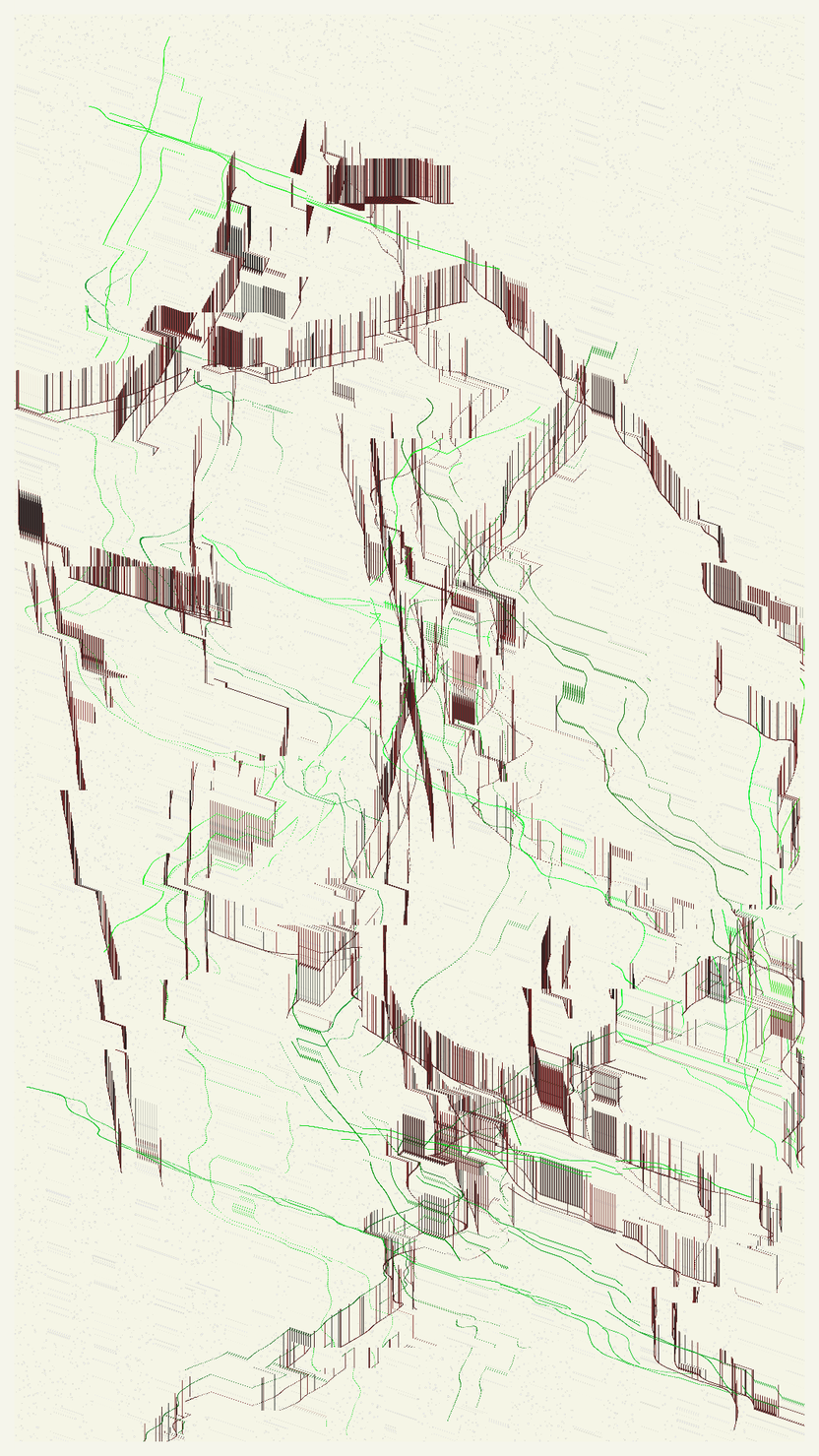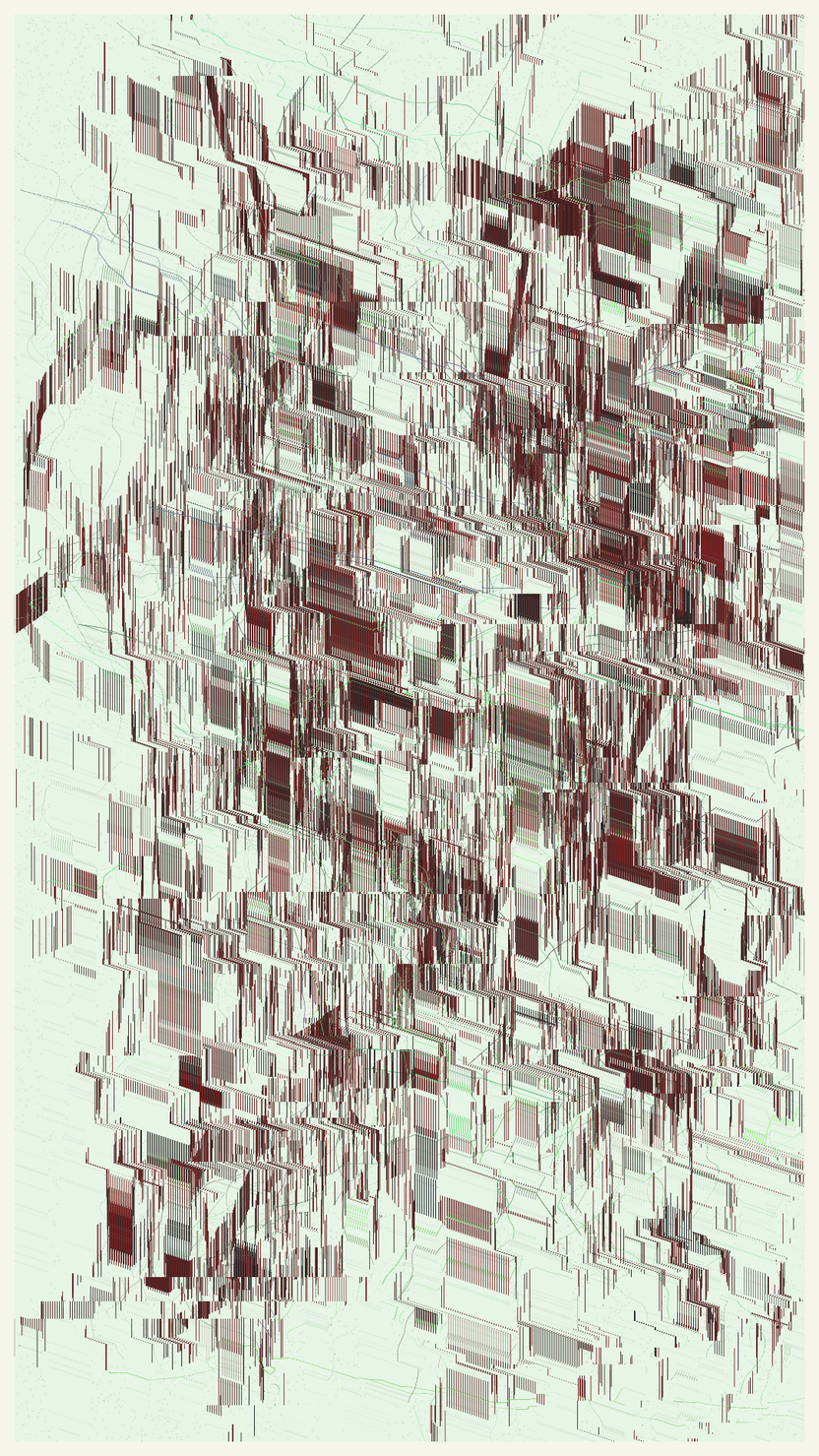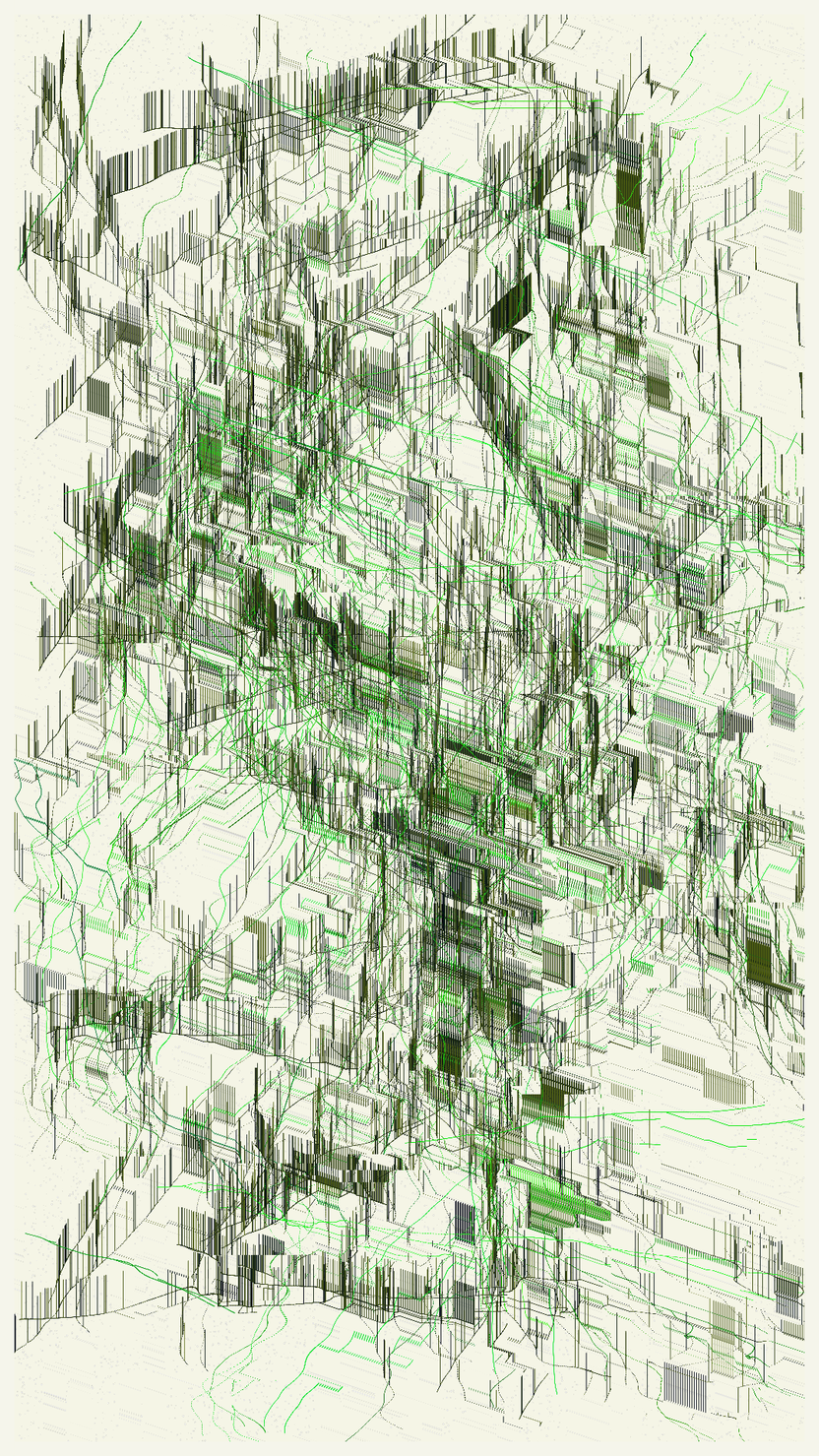by hasaqui
FLUX
IPFS

24 December 2022•TEZOS•IPFS
The code work I am most interested in creating with p5js in 2022 is a type of creation where various elements are developed in a drow() loop based on an initial state.
"Flux" also recursively generates visual images based on the initial state. The result is a form reminiscent of architecture, cityscapes, or neural networks.
Through the use of the noise() function, the code initially draws lines that are then extended vertically and randomly slide across a certain area. By repeating this process recurrently, the work itself becomes a visual image, with itself as a constituent element, while being damaged.
"Flux" is also a work about autopoiesis (or self-organization) in damage.
The get()set() is to treat the image generated by the code as an image(), and it may damage the purity of the work as a code. Therefore, I view random get()set() as a metaphor for damage.
The parameter “interrupt” has a certain probability of being “true”; if it is “true”, the density of the strokes is reduced, but in combination with other parameters, it is not easy to determine whether interrupt is “true” or “false”. Therefore, it is a practically meaningless parameter (attribute), but I added this parameter to imagine an artificiality in the code of nature.
Creating a dimensionless image (one that maintains the same output regardless of screen size) was a challenge due to the inevitable deterioration in resolution and rendering content when the same processing is performed at a smaller size. In order to prioritize resolution, the image was generated at a fixed size and displayed according to the screen size.
It is possible to get a 3240 x 5760 px png file by right click save.
Please feel free to contact me if you have any inquiries.
Artwork by hasaqui, @hasaqui.
Made with p5js
License: CC BY-NC-SA 4.0
"Flux" also recursively generates visual images based on the initial state. The result is a form reminiscent of architecture, cityscapes, or neural networks.
Through the use of the noise() function, the code initially draws lines that are then extended vertically and randomly slide across a certain area. By repeating this process recurrently, the work itself becomes a visual image, with itself as a constituent element, while being damaged.
"Flux" is also a work about autopoiesis (or self-organization) in damage.
The get()set() is to treat the image generated by the code as an image(), and it may damage the purity of the work as a code. Therefore, I view random get()set() as a metaphor for damage.
The parameter “interrupt” has a certain probability of being “true”; if it is “true”, the density of the strokes is reduced, but in combination with other parameters, it is not easy to determine whether interrupt is “true” or “false”. Therefore, it is a practically meaningless parameter (attribute), but I added this parameter to imagine an artificiality in the code of nature.
Creating a dimensionless image (one that maintains the same output regardless of screen size) was a challenge due to the inevitable deterioration in resolution and rendering content when the same processing is performed at a smaller size. In order to prioritize resolution, the image was generated at a fixed size and displayed according to the screen size.
It is possible to get a 3240 x 5760 px png file by right click save.
Please feel free to contact me if you have any inquiries.
Artwork by hasaqui, @hasaqui.
Made with p5js
License: CC BY-NC-SA 4.0
Artist and researcher. Under the slogan "Towards a Newest Laocoön", he works with drawing and AI/p5js. In parallel, he researches and writes critiques related to NFT. Recent article is "Discourse NFT Networks" for "Proof of X - NFT as New Media Art".
128 EDITIONS
•0 RESERVES
minted
128 / 128
fixed price
4 TEZ
Lorem ipsum project longer longer
0.00001 ETH
Lorem ipsum project longer longer
0.00001 ETH
Lorem ipsum project longer longer
0.00001 ETH
Lorem ipsum project longer longer
0.00001 ETH
Lorem ipsum project longer longer
0.00001 ETH
Lorem ipsum project longer longer
0.00001 ETH
Lorem ipsum project longer longer
0.00001 ETH
Lorem ipsum project longer longer
0.00001 ETH
Lorem ipsum project longer longer
0.00001 ETH
Lorem ipsum project longer longer
0.00001 ETH
Lorem ipsum project longer longer
0.00001 ETH
Lorem ipsum project longer longer
0.00001 ETH
Lorem ipsum project longer longer
0.00001 ETH
Lorem ipsum project longer longer
0.00001 ETH
Lorem ipsum project longer longer
0.00001 ETH
Lorem ipsum project longer longer
0.00001 ETH
Lorem ipsum project longer longer
0.00001 ETH
Lorem ipsum project longer longer
0.00001 ETH
Lorem ipsum project longer longer
0.00001 ETH
Lorem ipsum project longer longer
0.00001 ETH
Lorem ipsum project longer longer
0.00001 ETH
Lorem ipsum project longer longer
0.00001 ETH
Lorem ipsum project longer longer
0.00001 ETH
Lorem ipsum project longer longer
0.00001 ETH























